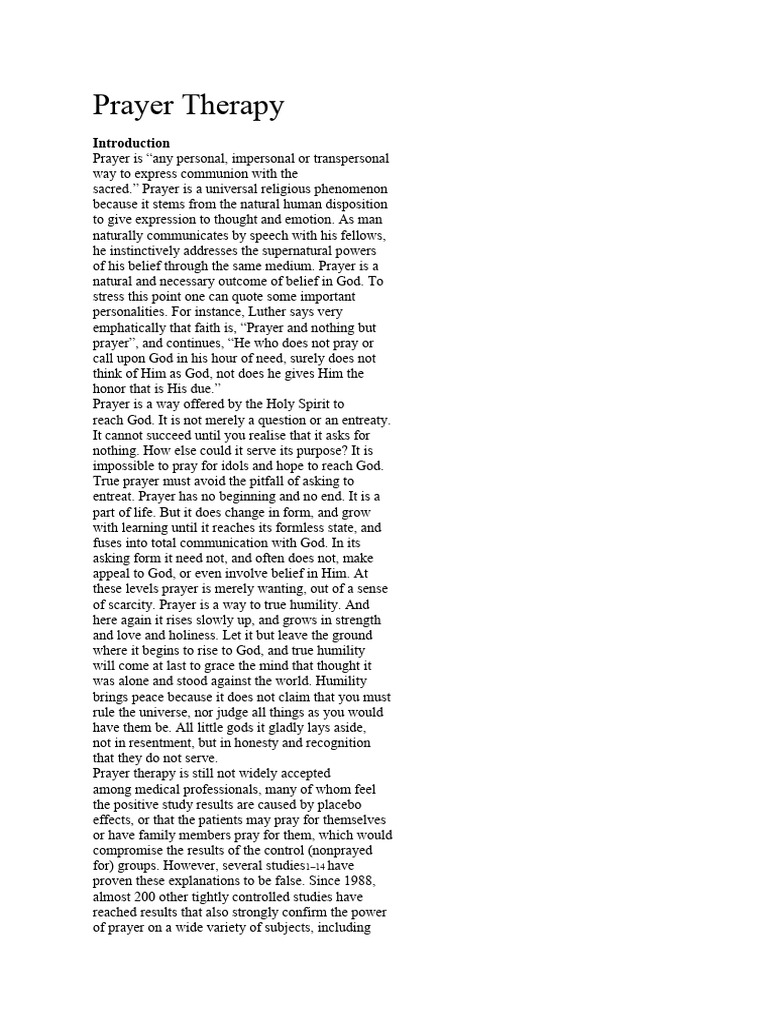The intersection of spirituality and mental health has garnered increasing attention in contemporary society. This exploration is particularly poignant within the Baha’i Faith, which offers profound insights into healing anxiety through a synthesis of prayer and therapeutic practices. This article delves into the Baha’i approach to anxiety, delineating its principles, strategies, and the inherent therapeutic synergy that arises from their teachings.
To begin, it is critical to understand the nature of anxiety itself. Defined as an excessive apprehension or dread regarding future events, anxiety may manifest as both psychological discomfort and physical symptoms. The implications of untreated anxiety are far-reaching, potentially leading to diminished quality of life and impaired functionality in both personal and professional realms. Hence, the need for effective interventions becomes paramount.
Central to the healing process in the Baha’i Faith is prayer, which is regarded not merely as a ritualistic practice but as a transformative act with profound significance. Prayer serves as a conduit for individuals to connect with the divine, fostering a sense of inner peace and harmony. According to Baha’i teachings, this spiritual communion engenders a release of burdens, alleviating the weight of anxiety. The Baha’i Writings emphasize that through prayer, individuals can attain a sense of trust in God’s wisdom, which acts as a therapeutic balm to the troubled soul.
Moreover, the Baha’i perspective on the human condition posits that individuals are inherently noble, yet face the vicissitudes of life that may lead to emotional turmoil. This understanding promotes the notion that healing is not solely an individual pursuit, but rather a collective journey. Baha’is are encouraged to support one another through compassion, fostering community as a source of strength and solace in times of distress. Therefore, engaging in group prayers or devotional gatherings can amplify the healing process, creating an atmosphere saturated with collective hope and support.
In tandem with prayer, the Baha’i Faith acknowledges the importance of psychology and therapeutic practices. The integration of mental health strategies within Baha’i teachings advocates for a holistic approach to healing. While prayer cultivates spiritual fortitude, psychotherapy provides empirical methodologies to address cognitive and emotional challenges. Baha’is are encouraged to seek professional guidance when faced with debilitating anxiety, thereby valorizing the role of trained mental health practitioners as vehicles of divine assistance.
Furthermore, the Baha’i approach to anxiety encompasses mindfulness and self-reflection. These practices, often intertwined with therapeutic modalities, promote a deeper awareness of one’s thoughts and feelings. Baha’i teachings advocate for the examination of one’s inner landscape, encouraging adherents to confront and understand their anxiety rather than suppress it. By fostering an environment of introspection, individuals can cultivate resilience and the ability to navigate through emotional turbulence with grace.
The Baha’i writings also espouse the significance of education and continuous personal development as countermeasures to anxiety. Education is not restricted to academic learning but includes the cultivation of spiritual and moral virtues that fortify the character. Engaging in community service, for example, not only benefits others but also bolsters one’s own sense of purpose and belonging—antidotes to the isolation that often accompanies anxiety. The Baha’i Faith calls upon individuals to engage in acts of service, thus promoting psychological well-being through altruistic endeavors.
In discussing the interplay between prayer and therapy, it is vital to elucidate the potential outcomes of this dual strategy. Individuals who adeptly integrate spiritual practices with therapeutic interventions often report enhanced emotional resilience and a deeper connection with their inner selves. The synthesis of these elements can lead to a comprehensive healing framework that encompasses emotional, spiritual, and psychological dimensions—inviting individuals to engage holistically with their lives.
Moreover, the Baha’i concept of “detachment” is particularly relevant in the context of anxiety. Detachment does not connote apathy but rather an ability to maintain an equilibrium in the face of life’s fluctuations. By fostering a sense of detachment, individuals can defuse the anxiety that often arises from attachment to specific outcomes or material concerns. This psychological detachment, inspired by spiritual principles, enables individuals to respond to challenges with poise, accepting the transient nature of existence while striving towards personal growth.
As we draw this exploration to a close, it is clear that the Baha’i approach to healing anxiety offers a formidable framework that intertwines prayer, community support, therapeutic practices, and individual development. By embracing this comprehensive approach, individuals can navigate the complexities of anxiety with resilience and grace. Integration of spiritual and psychological methodologies not only serves to alleviate immediate distress but fosters a robust foundation for enduring peace and fulfillment.
Ultimately, the Baha’i teachings illuminate a path toward healing that transcends conventional paradigms of mental health, inviting individuals to embark on a transformative journey of self-discovery and spiritual awakening. Within this journey lies the promise of hope, healing, and an unwavering connection to the divine.
